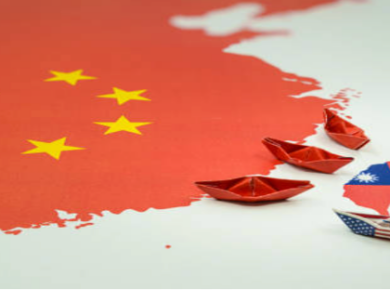Disclaimer: This blog post solely reflects the opinion of the authors and should not be taken to represent the general views of IPPR’s management/ editorial team or those of fellow authors.
Food – one of the few human desires that is hard to escape from. As it stands, world hunger – namely under-nourishment – is a significant issue.
It’s thought that 8.8% of the world’s population is undernourished, meaning that they receive a daily caloric intake below the minimum, biologically feasible requirements. This equates to roughly 663 million people worldwide; and while such a number may seem low in the context of Earth’s total population of 7 billion, when you consider this as equivalent to ten times the UK population, the scale of under-nourishment is truly shocking.
Globally, 22% of children under five are ‘stunted’, meaning they are significantly shorter than the average for their age because of a lack of nutrition.
This is a grim picture; and a growing global population, in addition to the consequences of climate change, war and disease, can only exacerbate an already fragile situation.
So what can be done? What can we do to tackle the issue of under-nourishment and the dire consequences that such a crisis creates?
The first thing to note is that food insecurity and hunger are both global issues. While these issues may be most prevalent in developing nations, they’re still very real problems in the developed, western world too. An estimated 60 million people (or 7.2% of people) in high income countries used food banks in 2013. Improving food security is a high priority for many nations like Australia, Canada, and the United Kingdom where economic inequality – the gap between rich and poor – is large. Similarly, many developed and developing countries are vulnerable to the effects of climate change, the consequences of which translate directly into more volatile food supplies.
Recognising food insecurity as a global problem, and one that requires a global solution, the international community has committed to eradicating hunger by 2030. Such a goal is ambitious – it means eliminating under-nourishment across the globe, including war-torn countries and those hit worst by famine, disease and natural disasters. However, the COVID-19 pandemic has stunted any progress towards eradicating hunger – in fact, according to the Food and Agriculture Organisation of the United Nations, the number of under-nourished people worldwide rose in 2020 after remaining relatively constant since 2014.
It’s clear that more needs to be done – especially in light of the pandemic. But such a widespread problem requires a plethora of solutions, with the aggregate benefits of each solution working together to reduce food insecurity.
Multilateralism, and international organistations like the WTO, will be key agents in the development of these solutions. Previous discussions surrounding food insecurity, such as the WTO’s 2014 Doha Round, focused on issues such as import tariffs and quotas. Most international institutions believe that reducing tariffs and quotas, forging a gradual shift towards trade liberalisation, is the best strategy for the international community. Little emphasis, however, has been put on the significant damage that developed nations cause developing economics through their heavy use of agricultural subsidies.
In 2016, the total value of agricultural subsidies used by countries in the OECD – a group of 38 countries consisting, in the majority, of developed economies in Europe and North America – exceeded $228 billion. This sum is staggering; and when you consider that wage rises in emerging developing economies, like China and Brazil, are corresponding to an increase in agricultural subsidies in these nations, global dependence on such subsidies will only continue to rise.
If we are to work together as a truly global community, more developed nations must realise the damage that they are causing through farming subsidies, especially when used on such an astronomical scale.
This damage is two-pronged. Firstly, agricultural subsidies are harming developing nations who suffer from a reduction in comparative advantage in global food markets, especially those producing staple goods. Producers in developing nations find it almost impossible to compete with producers in developed ones that receive substantial financial support. The second form of damage is the environmental cost of these subsidies that occurs as a result of over-farming.
A recent report by the UN found that 90% of agricultural subsidies used worldwide have harmful repercussions – the most polluting industries, namely beef and milk, received the largest subsidies. The report also found that these subsidies were a big source of global inequality as they price-out smallholder farmers from the market. This is especially startling when you consider that smallholder farms produce one third of global food supplies.
The difficulty with these agricultural subsidies is that, in the most part, they are an effective solution in reducing short-run, domestic food insecurity. Subsidies generally reduce prices, often resulting in less volatile food supplies. Supporters of these subsidies make this point very clear, but it must be emphasised that this is not a sustainable solution. Whilst domestic food systems may be boosted by such subsidies, global, long-run food supplies are very much threatened. Reductions in the price of staple goods have proven to lead to adverse trade consequences for those countries with comparative advantages in these goods, therefore reducing the long-run food security in many developing nations.
As it stands, the issue of food subsidies can be summarised simply as a trade off between short-run and long-run food security, or – perhaps more significantly – a trade off between high- and low-income countries.
There is not an easy solution to the volatility of food prices, or the issue of food security, but developing nations must recognise the significant role that they play in influencing this issue. Nations like New Zealand have proven that agriculture can be a profitable and sustainable industry, even in the absence of subsidies. By reducing subsidies from around 30% to almost nothing, and allowing markets to operate freely, New Zealand has seen a significant reduction in sheep farming and a greater emphasis on more environmentally friendly agriculture. The success of New Zealand’s wine industry is an example of what can be achieved by reducing agricultural subsidies: exports have grown exponentially since 1985, when subsidies were first reduced, from a value of NZ$3million to a staggering NZ$1.4billion in 2016.
Further developed countries must step up to the challenge and contribute towards a more sustainable food system by reducing subsidies, or perhaps even redistributing them to the smallholder producers in low-income countries.
Regardless of where we stand, what nation we hail from or where we pledge our allegiances, all nations around the world are vulnerable to the consequences of food insecurity. We all have a part to play, and, through collective action, we can come to a solution.
By Conor Walsh
A first year reading Philosophy, Politics and Economics (PPE). I’m fascinated by global inequality and humanitarian crises, with particular interest in the Calais migrant crisis and the affect of the British arms trade on war in Yemen.






